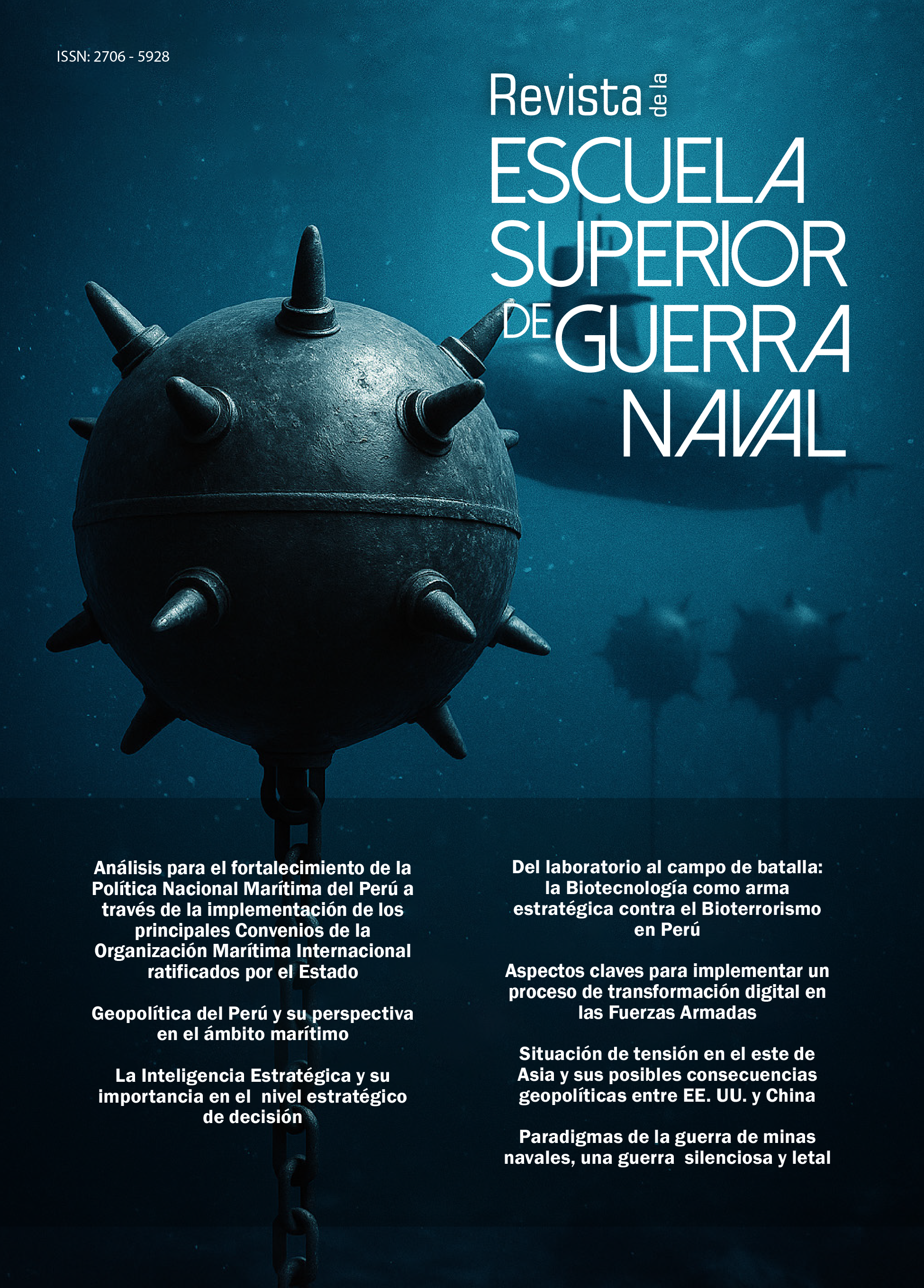From the laboratory to the battlefield: Biotechnology as a strategic weapon against Bioterrorism in Peru
Abstract
Emerging threats such as bioterrorism, represent one of the greatest challenges to national security in the 21st century. In a context where dangerous pathogens can be intentionally released, the impact of a bioterrorist attack could be devastating to public health, the economy, and national stability. In Peru, preparation for these threats is crucial. With a country facing risks of natural outbreaks, as well as potential future conflicts that could include possible biological threats, it is vital to strengthen defense against these new forms of aggression, especially in a country like Peru, with limited economic resources and a public health infrastructure that still faces significant challenges.
Biotechnology plays an essential role in the detection and identification of biological threats. Thanks to advances in molecular and genetic sequencing techniques, it is possible to detect pathogens with high precision and speed, allowing biosecurity systems to act immediately. The ability to identify bioterrorist agents is the first step in containing these risks and developing strategic responses that include rapid diagnostic systems to protect the population. In addition to detection, biotechnology is essential for the containment and implementation of countermeasures against biological threats. Facing a possible bioterrorist attack requires a comprehensive response, where therapies, vaccines and specific immunization methods are developed for identified pathogens. These countermeasures allow not only to contain the spread, but also to neutralize possible attacks with a coordinated and precise public health response, thus reducing the impact on the population and the health system.
At a global level, institutions such as the United States' National Biodefense Analysis and Countermeasures Center (NBACC) and the North Atlantic Treaty Organization (NATO) with its Science for Peace and Security program lead efforts to confront bioterrorism. The NBACC investigates bioterrorism agents and contributes to the development of forensic capabilities, while NATO and the World Health Organization (WHO) work on planning international responses, supporting countries in managing biological crises. INTERPOL also collaborates in the training of security forces and in the management of bioterrorist incidents, strengthening the global response to these threats.
For Peru, the development of biotechnology and biosecurity research capabilities is essential for a modern and effective national defense. The creation of a National Biotechnology Center in Peru, which could investigate both the risks and applications of biotechnology for national security and defense, could be a strategic step. Investing in high-security laboratories, training specialists and establishing response protocols would allow strengthening the country's protection against possible bioterrorist attacks and other biological risks. This proactive approach would not only strengthen security but would also position Peru as a benchmark in biosecurity in the region.
As a Biotechnology Engineer, my contribution to National Defense in this context is truly significant. This article will be a pioneer at the national level in addressing biotechnology as a strategy against bioterrorism. In an environment of increasing technological sophistication and complex threats, my work aims to strengthen the country's capacity to mitigate bioterrorism risks and protect both public health and national security. This article will thus mark a milestone in the integration of science into defense, establishing a reference model that could guide future policies and strengthen Peru's security against biological threats.





 Este artículo está bajo una
Este artículo está bajo una 